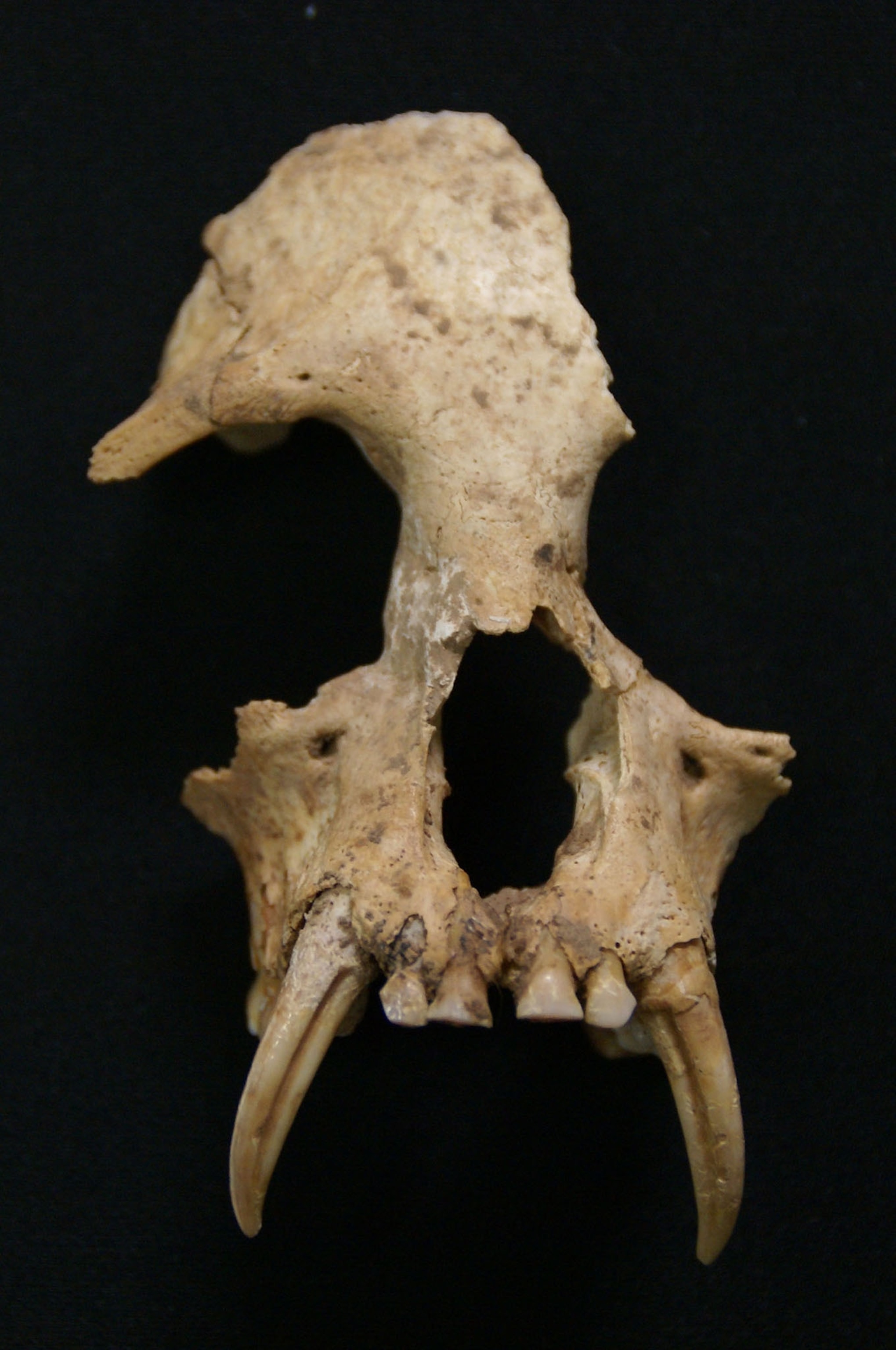
Ancient Royal Tomb Yields Strange New Ape Species
The toothy creature provides rare evidence of early human-caused extinctions.
Lady Xia's tomb would have certainly been something to behold. Excavated in 2004, the tomb belonged to the grandmother of China's first emperor, Qin Shihuang. Inside was an array of riches—jade, gold, silver, engraved pottery, and two carriages complete with 12 horses, according to reports from Chinese state media.
Twelve pits in the tomb also yielded bones from an exotic menagerie, including an Asiatic black bear, a leopard, a lynx, a crane—and an unusual-looking gibbon. The skull of this small ape is so strange that researchers now believe the high-status pet belongs to a newly described, but extinct, genus and species.
The researchers gave the creature the moniker Junzi imperialis, which is a nod to the skull's royal roots as well as the gibbon's common role of “scholarly gentleman” (the English translation of Junzi) in ancient Chinese mythology.
Perhaps most importantly, the gibbon discovery provides strong evidence of early human exploitation of the creatures, helping scientists understand the extent of our influence on past primate extinctions, researchers argue in a new study published today in the journal Science.
“There's very little known about primate extinctions—almost nothing,” says study coauthor James Hansford, a postdoctoral research associate with the Zoological Society of London. With gibbon remains in Asia primarily limited to teeth and small bone fragments, the fossil record for these beasts is far from complete.
“Just establishing the fact that it existed is a hugely important thing,” says Hansford.
A Toothy Grin
Thanks to the skull's archaeological importance, the researchers couldn't study the ape's DNA, which calls for destruction of part of the precious bones. Instead, they turned to what's known as morphometric analysis, or studying the specific shape and angles of the skull and teeth.
To the untrained eye, the ancient gibbon skull may bear a striking resemblance to the heads of the tree-swinging apes we know today. “They tend to look fairly similar ... especially once you pile on all the hair,” says Susan Cheyne, vice chair of the IUCN Primate Specialist Group Section on Small Apes, who wasn't involved in the work.

So the study team assembled a database of skull and teeth dimensions for the four living genera of gibbons, using lasers to measure a total of 789 teeth from 279 individuals, as well as 477 skulls. This database allowed them to compare the imperial ape to known species. “What we found from that is it's extraordinarily different,” says Hansford.
The forehead is steeper and the brow is more understated, explains study coauthor Alejandra Oritz, a postdoctoral researcher at Arizona State University. And then there are the teeth. Put simply, it has very big teeth, says Hansford.
“The lower molars are just out of sight,” says John Fleagle, a primate anatomist at Stony Brook University, who wasn't involved in the work. Fleagle agrees with the authors' distinction of the creature as a new genus and species, and he praises the rigorousness of their comparison, which included hundreds of specimens.
“It looked like everything they could get their calipers on,” he says.
He points out that a life in captivity might explain some of the weird bone shapes, since “animals that were raised by humans and given funny things to eat sometimes have funny skeletons.” But, he adds, such effects likely couldn't produce such big chompers.
“It's clearly a weird specimen,” he says.
Doomed by Trade?
Today, all Chinese gibbons are critically endangered, the highest category of threat on the IUCN red list, notes Cheyne. At risk due to deforestation and poaching, the creatures now traipse across only a fraction of the land they once called home.
Some researchers believe this kind of primate devastation is a recent affair. “There was the idea that apes in the past have been somewhat resilient to anthropogenic pressures and incidental habitat loss,” Oritz says in an email. But the imperial gibbon discovery suggests this isn't the case.
Most major extinctions likely occurred in part due to massive swings in climate. Roughly 11,000 years ago, the last ice age loosened its frosty grip. Glaciers receded, temperatures warmed, and many animals began heading toward extinction—giant ground sloths, wooly mammoths, saber-toothed cats, and more.
But the gibbons persisted. The fossil find suggests they swung through the trees of Shaanxi in central China around 2,000 years ago, during a period of stable climate. They seemed to thrive in these forests until just a few hundred years ago, when they vanished from the region, according to historical records.
So where did they go? Most signs point to human meddling.
During this time, the need for farmland grew along with the population, and forests suffered. Gibbons prefer life high up off the ground and are crippled by the loss of an aboral home. Add in a dash of trapping and trading as high-status pets—as evidenced by the entombed gibbon—and the creatures didn't stand a chance.
Things aren't much different for gibbons in the internet age, which has only intensified some of the problems, Cheyne explains. “Gibbons are being openly advertised for sale on Twitter and Instagram and Facebook,” she says. (Hunting for bush meat is also driving some primate species to the brink of extinction.)
Many of these creatures are now teetering on the edge. Hansford and his colleagues are working to protect one such species, the Hainan gibbon (Nomascus hainanus), of which only some 26 individuals remain.
“What we can start to see is that [modern gibbon species are] a relic of what was perhaps a much wider radiation of gibbons and primates across Asia,” says Hansford. “We've lost more and more and more of them. We can't even quantify what we lost because we don't have the records of it.”
The discovery of the imperial gibbon is evidence of this long history of demise, and it highlights the importance of current protections. “The key thing is we can learn from our past,” says Cheyne, “and try to change our future.”








